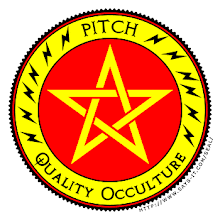
Over at Blog o' Gnosis, Anne Hill talks a little about what and where we both have our roots--something that some folks call California Cosmology (although I don't like this term and don't think that there is one but a constellation of them!) Anyway, she writes:
California cosmology is what I grew up on, catching glimpses on the radio, tv, and on the streets as a Bay Area youngster in the 1960s and 70s. It was wild and free, challenging, esoteric, erotic, and hinted of a grand future for humanity.
Most of my blog posts have something to do with this California Cosmology and how the challenges, opportunities, and possibilities of growing up in this heady Witch's brew of esoterica, erotica, creativity, defiance, and--importantly--regional culture made me the practitioner that I am today.
Look, as a young teen aged boy in junior high school, no matter my science and science fiction fannishness, I had no intention of becoming a practicing Neo-Pagan Witch. I was interested in technology and sensible meaning and learning about the palpable world and ways to comprehend it. I was not interested in doing real magic. I did not believe that real magic was possible, only something to fantasize. I played at working magic, mostly to discover how others responded to play acted magic.
I liked the landscape and the climate of the San Francisco Bay Area. I felt comfortable on that landscape and within that climate. But I did not consider the land itself as a living being. And I did not recognize the roots and ties that had already grown up between me, the land where I lived, and the life of that land.
But--what do you know?--a speech therapist passed along to me, a clumsy 8th grader, a deep and sound instruction in magical practice and metaphysical wisdom. Without saying a word about it. So I was doing real magic long before I realized it. And by the time I did--I had already experienced the alchemy. It had already transformed me--profoundly.
This all worked for me the way it did, and probably the same is true for Anne Hill, because, within California Cosmology we grew up in, nothing-- nothing --appeared a strange to us as it did, and would have, to folks in another of America's then still vibrant regional cultures.
Every day, I saw world destroying weapons systems, nuclear-powered ballistic missile submarines, being built more or less in my backyard, and others, bombers, flying overhead. Down the road they were poking around into the nature of matter and building big machines to do it. Russian bombers and missiles had us targeted.
Let me tell you, after this, seeing flying saucers is not so strange. Why wouldn't ufo aliens visit Mt. Palomar?
Let me illustrate this another way. George Lucas, who also grew up amidst California Cosmology, made American Graffiti and the Star Wars saga. California car culture is not so far away from California space ship culture.
It all grows out of the same hyper-fertilized ground. The vision that created custom cars is the same one that created space ships and star voyaging. UFO aliens crossed paths with hot rodders in the Mojave Desert.
There's a lot of currents flowing within California Cosmology. One of the dilemmas I face when I blog about becoming a Neo-Pagan Witch is how to identify them in their distinctiveness yet activate them in their simultaneity.
For instance, what does topless dancing have to do with it?
Powered by Zoundry Raven














